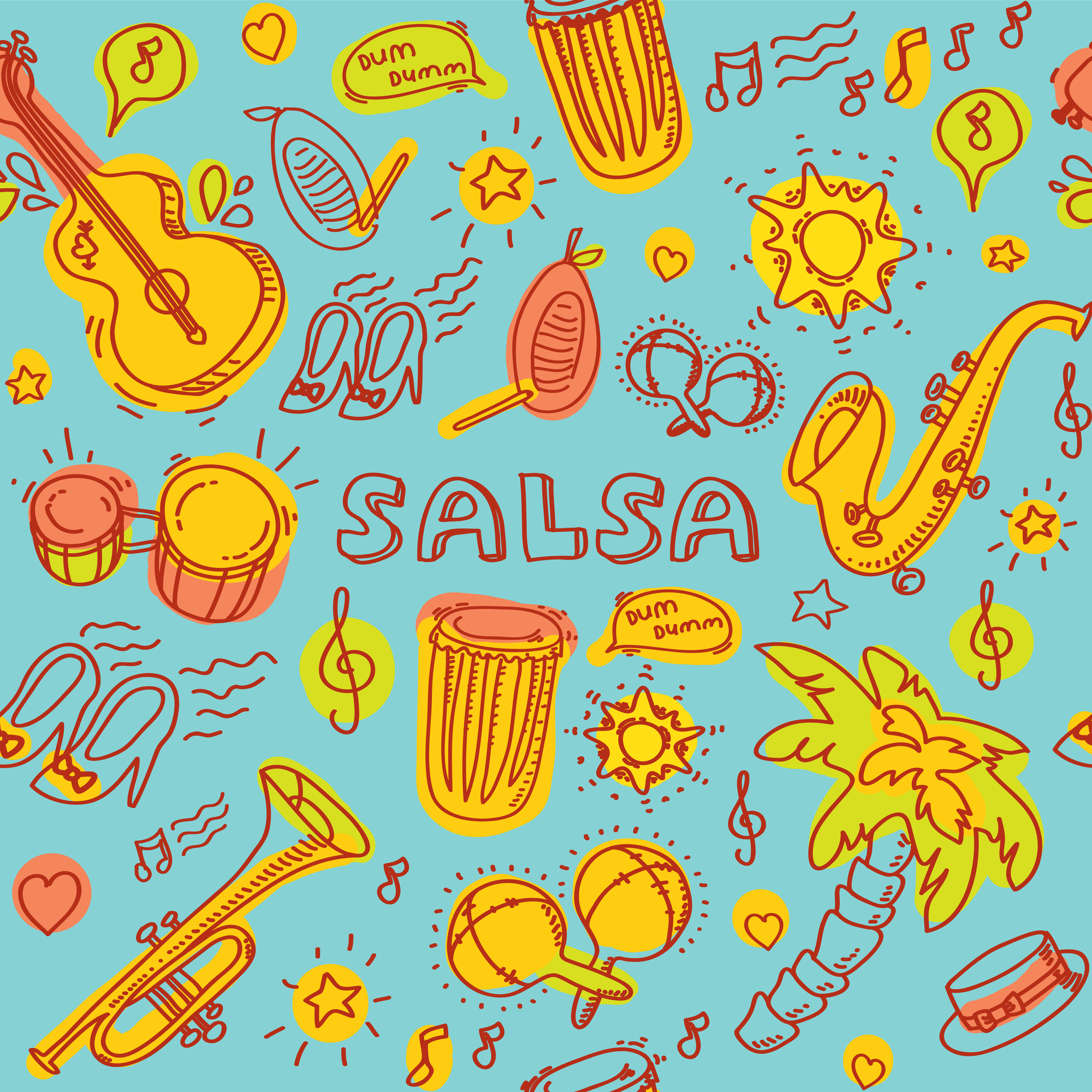- Get link
- X
- Other Apps
Salsa is a vibrant and rhythmic genre of music and dance that originated in the Caribbean, particularly in Cuba and Puerto Rico, during the mid-20th century. It blends various musical styles such as Afro-Cuban rhythms, jazz, and Latin American influences to create an energetic and infectious sound. In this article, we will explore the history, characteristics, and cultural significance of salsa music.
The origins of salsa can be traced back to the early 20th century in Cuba, where a fusion of African and European musical traditions gave birth to a new genre called son. Son was characterized by its syncopated rhythms, call-and-response vocals, and lively instrumentation. It served as the foundation for the development of salsa music.
During the 1940s and 1950s, Cuban musicians like Arsenio Rodríguez and Beny Moré further expanded the son sound, infusing it with elements of jazz and other Afro-Cuban rhythms. This period marked the rise of the mambo, a dance style that gained popularity in both Cuba and the United States.
However, it was in the 1960s and 1970s when salsa as we know it today emerged and gained global recognition. The term "salsa" was coined in New York City, where a large community of Latin American immigrants, particularly from Puerto Rico and Cuba, settled. It became a melting pot of musical styles and influences, with musicians experimenting with different rhythms, arrangements, and lyrics.
Salsa is characterized by its infectious rhythm section, consisting of instruments such as the congas, bongos, timbales, and the cowbell. These instruments create a driving beat that is complemented by a melodic ensemble of trumpets, trombones, and saxophones. The bass and piano provide a solid foundation and rhythmic structure, while the vocals deliver passionate and emotive performances.
One of the defining features of salsa is its emphasis on improvisation. Musicians often take turns showcasing their skills through instrumental solos and vocal improvisations, adding a sense of spontaneity and excitement to the music. This improvisational aspect also extends to the dance form associated with salsa, where dancers interpret and respond to the music with their own rhythmic movements and footwork.
Salsa music is known for its lively and energetic nature, creating an atmosphere that is conducive to social dancing. It has become a popular dance style around the world, with salsa clubs and dance schools found in many major cities. Salsa dance incorporates elements of partner work, intricate footwork, and sensual body movements, allowing dancers to express themselves and connect with their partners and the music.
In addition to its infectious rhythms and danceability, salsa music often carries social and political messages. Lyrics may touch upon themes of love, heartbreak, social justice, and cultural identity. Salsa has served as a platform for artists to express their experiences, celebrate their heritage, and address societal issues. It has been a voice for the Latin American community, serving as a means of cultural preservation and a tool for empowerment.
Several iconic salsa artists have left an indelible mark on the genre. Figures like Celia Cruz, Tito Puente, Rubén Blades, Willie Colón, and Héctor Lavoe have become synonymous with salsa music, each contributing their unique style and talent to its rich tapestry. Their music continues to be celebrated and cherished by fans worldwide.
Today, salsa continues to evolve and adapt, incorporating new influences and fusing with other genres such as jazz, hip-hop, and reggaeton. It remains a dynamic and vibrant genre that has transcended borders and cultural barriers, uniting people through its infectious rhythms and universal appeal.
In conclusion, salsa music is a cultural treasure that originated in the Caribbean and has captivated the world with its infectious rhythms, passionate vocals, and lively dance form. Its rich history, diverse influences, and vibrant energy make it a genre that continues to resonate with people of all backgrounds. Whether on the dance floor or through the speakers, salsa music has the power to uplift spirits, bring people together, and celebrate the joy of life.
- Get link
- X
- Other Apps

Comments
Post a Comment